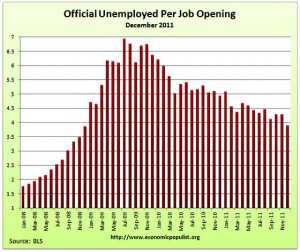Have you become sick of hearing about it? The Mayan End of the World is less than three weeks away and the people on the teevee keep talking about the Fiscal Cliff. I’m still waiting for Comet Kohoutek. For those of you who are too young to remember, here is what Wikipedia tells us about Comet Kohoutek:
Before its close approach, Kohoutek was hyped by the media as the “comet of the century”. However, Kohoutek’s display was considered a let-down, possibly due to partial disintegration when the comet closely approached the sun prior to Earth flyby.
Our next media-hyped non-event was the infamous Y2K story. Thousands of people started hoarding canned food, building shelters and preparing for a Cro-Magnon lifestyle because the computers thought that every year began with the two digits 1 and 9. Yeah, that happened.
This week, everyone is talking about the Fiscal Cliff. By now, there have been enough sober reports (and lawsuits by the Mayans) to force people into the realization that the world will not end on the 21st day of this month. The country has found a better focus for its consensual panic: The Cliff. Concerns voiced by Ben Bernanke and others brought our attention to the possibility that if our government resumes its budget standoff – after the can was kicked down the road last summer – our government’s credit rating could face another cut. As a result, Bernanke invented the cliff metaphor and everyone ran with it – despite the fact that it is not appropriate.
The best Fiscal Cliff Smackdown came from Barry Ritholtz, who wrote a great piece for The Washington Post entitled, “How important is the fiscal cliff for investors? Hint: Not very.” The explanation of the cliff contained in the article was quite helpful for those unfamiliar with the details:
Let’s start with a definition: The term refers to the deal that Congress made in late 2011 to temporarily resolve the debt ceiling debate. The “sequestration,” as it is known, calls for three elements: tax increases, spending cuts and an increase to the payroll tax (FICA). The Washington Post’s Wonkblog has run the numbers and finds “$180 billion from income tax hikes, $120 billion in revenue from the payroll tax, $110 billion from the sequester’s automatic spending cuts and $160 billion from expiring tax breaks and other programs.”
* * *
The term “fiscal cliff,” popularized by Fed Chairman Ben Bernanke, is really a misnomer. As several analysts have correctly observed, the effects of sequestration are not a Jan. 1, 2013, event. The impact of the spending cuts and tax hikes would be phased in over time. A fiscal slope is more accurate. Additionally, as students of history have learned, single-variable analysis for complex financial issues is invariably wrong. Because of the inherent complexity of economies and markets, we cannot adequately explain or predict their behavior by merely looking at just one variable.
Ritholtz brought our attention to a great article about the fiscal cliff hype, written by Ryan Chittum for the Columbia Journalism Review. Chittum blamed CNBC’s “Rise Above” publicity campaign as the primary force driving fiscal cliff anxiety:
Any time you see Wall Street CEOs and CNBC campaigning for what they call the common good, it’s worth raising an eyebrow or two.
* * *
You’ll note that CNBC has not Risen Above for the common good on issues like stimulating a depressed economy, ameliorating the housing catastrophe, or prosecuting its Wall Street sources/dinner partners for the subprime fiasco. But make no mistake: even if it had, it would have been stepping outside the boundaries of traditional American journalism practice into political advocacy. And that’s precisely what it’s doing here, at further cost to its credibility as a mainstream news organization instead of some HD version of Wall Street CCTV.
* * *
Last but not least is the hypocrisy of CNBC in talking about Rising Above politics. This is the network, after all, that kicked off the Tea Party, an austerity push that was one of the more damaging political movements in recent memory.
* * *
It’s just not CNBC’s job, institutionally, to campaign for anything. Cover the news, as they say, don’t become it.
December 21 will come and go with nothing happening. It will be January 1, 2000 all over again. The fiscal cliff “deadline” – January 1, 2013 – will come and go with nothing happening. The budget can will be kicked down the road again by the “lame duck” Congress.
In the mean time we can entertain ourselves by learning how celebrities are preparing for Armageddon. After all, they’re here to entertain us.
